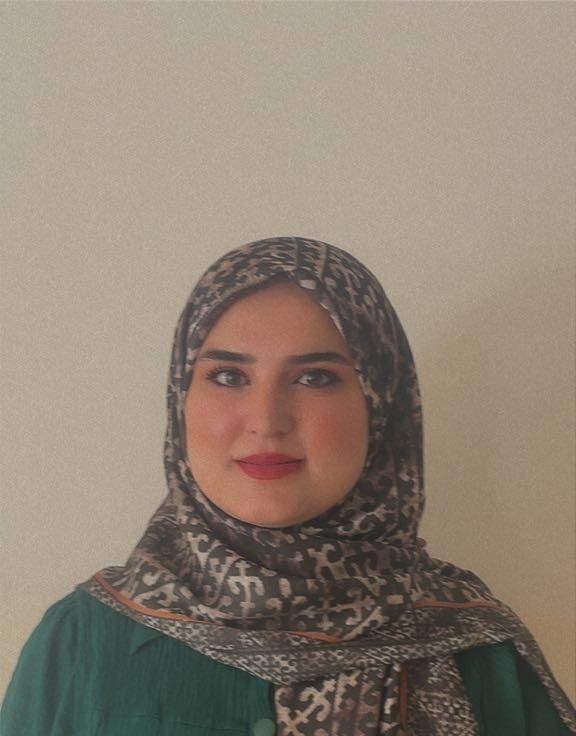
Lanja Mohammed shukur
Research InterestsOccupational Medicine Environmental Health Agricultural Safety Horticulture Landscape Engineering
| Gender | FEMALE |
|---|---|
| Place of Work | College of Health and Medical Techniques / Kirkuk |
| Department | Occupational Safety and Occupational Medicine Techniques |
| Qualification | Master |
| Speciality | Horticulture and Landscape Engineering |
| lanjamohammed@ntu.edu.iq | |
| Phone | 07725962020 |
| Address | Kirkuk, كركوك, Kirkuk, Iraq |
Assistant Lecturer: Linjah Muhammad Shukr, lecturer at the College of Health and Medical Technologies, Kirkuk, in the Department of Occupational Safety and Occupational Medicine, obtained a bachelor's degree from the University of Kirkuk in 2018 and a master's degree in 2022 in Horticulture and Landscape Engineering.
Skills
ARABIC LANGUAGE (80%)
ENGLISH LANGUAGE (65%)
Academic Qualification
Bachelor of Horticulture and Landscape Architecture
Jan 10, 2014 - Jan 6, 2018Master of Horticulture and Landscape Architecture
Jan 1, 0020 - Jan 11, 2022Publications
Effect Of Foliar Nutrients On Some Growth And Yield Traits In Tomato
May 22, 2025Journal International Journal of Environmental Sciences
publisher Asian Society for Scientific Research (ASPD)
DOI https://doi.org/10.64252/6k77ga89
Issue 2S
Volume 11
The study was conducted as a randomised complete block design (R.C.B.D) trial. with three replications in a farmer's field in Kirkuk governorate for the 2024 growing season to investigate the effect of foliar nutrients (Soli Vig and ProSol) on some fruiting traits of To study the effect of foliar nutrients (Soli Vig and ProSol) on some fruiting traits of Wadi tomato variety, different concentrations of the above foliar nutrients (0, 2 and 4) g/litre were used, and through statistical analysis of the results, it was found that treatment 4 g/litre and both nutrients were significantly superior to the control and other treatments, where the highest rates of Soli Vig and ProSol for the studied traits were plant height (71.33 cm) and (74.66 cm). (33) cm and (74.66) cm respectively, number of branches (10.33) branches and (9.96) branches respectively, number of fruits (10.33) fruits and (9.96) fruits respectively, fruit weight (549.1) g and (495.16) g respectively and quotient (15.46) g and (16. 23) g respectively, as for the overlaps, the overlap in all studied traits exceeded the overlap in plant height, number of branches, number of fruits, fruit weight and yield (82.3 cm, (11.3) branches, (29.4) fruits, (681.1) g and (19.2) g, fruit weight (549.1) g and (495.16) g respectively and quotient (15.46) g and (16. 23) g respectively, as for the overlaps, the overlap in all studied traits exceeded the overlap in plant height, number of branches, number of fruits, fruit weight and yield (82.3 cm, (11.3) branches, (29.4) fruits, (681.1) g and (19.2) g respectively.
EFFECT OF SELENIUM AND BRASSINOLIDE ON GROWTH AND YIELD OF TWO BROCCOLI HYBRIDS, BRASSICA OLERACEA VAR. ITALIC
Jun 16, 2022Journal British Journal of Global Ecology and Sustainable Development
publisher Leo Smith Publishing
Volume 5
The experiment was carried out during the agricultural season (2021-2022) in one of the agricultural fields in the village of Tarjeel, Laylan district in Kirkuk governorate, and the experiment included the study of three factors, the first factor included spraying with selenium at concentrations (40, 30, 20 mg. L-1) and the second factor spraying with brassinolide in concentrations 150, 100, 50 mg. L-¹) and factor III hybrids (Paraiso, Jassmine F1). The treatments were sprayed in two batches, the first spray 20 days after planting the seedlings on 1/9/2021, and the second spray 20 days after the first spray. The experiment included three replicates, and each replicate had 14 experimental units. The experiment was implemented according to the Split Plot Design system within the design of randomized complete sectors. RCBD and the data were statistically analyzed according to the least significant difference LSD at the probability level of 0.05, where the results showed that spraying with selenium concentration (20 mg. L⁻ ¹) was significantly superior to the characteristic of the number of leaves, which amounted to 44.430 (leaf⁻ ¹) and also the concentration (40 mg. L⁻ ¹). for the weight of the lateral pink tablets (g), which reached 0.590 g, while the brassinolide at a concentration (100 mg. L⁻ ¹) was significantly superior in the relative content of chlorophyll in leaves and leaf area of one leaf, which reached (101,335 CCI and 632.500 cm² leaves⁻ ¹) sequentially. While the Jasmine F1 hybrid showed significant superiority, the highest plant height was 75.524 cm, the number of leaves reached 49.733 leaves, the leaf area per leaf reached 693.400 cm² leaf⁻ ¹.




